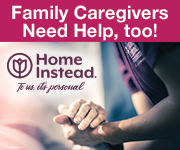HEALTH - SENIORS
Keeping Seniors Safe
July, 2013 - Issue #105
News from Hearing Expert Nola Aronson
Hearing Loss And Safety
by Nola Aronson, MA
Untreated hearing loss can pose a safety threat to you and those around you. Not being able to hear alarms, sirens, construction or traffic can lead to danger that could be prevented with the help of hearing aids.
Driving
You must be able to recognize the sounds of police cars, fire trucks, construction and railroad signals. Have you ever tried to back out of a space or parallel park and another car honks at you? Individuals with hearing loss might miss these signals, resulting in an accident.
Emergency Noises
Many people with hearing loss will not wake to the common noise of a fire alarm in their hallway. Depending on the pitch and frequency of an alarm, individuals with hearing loss could sleep through the noise.
The Environment
If you enjoy walking, hiking or biking, it's crucial to hear the traffic around you. The quiet roar of an oncoming car can be missed by someone with even mild hearing loss, and those with more extreme cases may not hear the honk of horn, a police or fire siren, or construction zone noises.
Workplace Safety
Employees with hearing loss may be put in harm's way more frequently than those with normal hearing. Whether you work in an environment with moving vehicles, forklifts, warning bells or other machines, or in an office, a loss of hearing can prove to be dangerous.
Nola Aronson, MA, CCC-A, FAAA of Advanced Audiology has been helping Santa Clarita hear better for over 26 years. Call for more information or to schedule an appointment to have your hearing screened. 877-4555
Fall Prevention is Important to Senior Health
When you think of your aging loved ones, what do you worry about most? Is it a heart attack or stroke cutting their life short, or perhaps cancer? While these illnesses are very real worries for everyone as they age, it may surprise you to discover that falls are the second leading cause of accidental death in the United States and that 75 percent of these falls occur in the older adult population.
Falls are the single largest cause of injury among seniors. According to the Centers for Disease Control and Prevention's (CDC) National Center for Injury Prevention and Control, older adults are hospitalized for fall-related injuries five times more often than they are for injuries from other causes. One-third of older adults who fall, sustain a hip fracture and are hospitalized die within a year.
Even if a fall does not result in hospitalization, fear of falling can become a major factor in a senior's quality of life. Fear leads to inactivity and loss of confidence, which, in turn, produces a cycle of fear, loss of self-confidence and inactivity.
Here are some easy tips to help minimize the risk of life-altering falls for your loved ones.
• Throw rugs can be a tripping hazard. Either remove them or make sure they are securely tacked down.
• Add hand rails to all stairs.
• Clear clutter from walking paths and make sure hallways and stairways are well lit.
• Eliminate long extension cords that snake across a room. Plug lamps into outlets near the wall so cords are tucked away.
• Add grab bars next to the toilet, tub and shower.
• Getting in and out of the tub can be hazardous. In addition to grab bars, make sure the tub has non-skid mats. A tub seat may make showering easier, too.
• Trade in floppy slippers for well-fitting slippers with non-skid soles. Also, avoid night clothing that drags on the ground.
The experts at Visiting Angels can help you check for hazards in your loved one's home. Call Visiting Angels office for a free consultation to help you assess your situation and address the issues that are important to you and your family. 263-2273
Treat Arthritis of the Foot & Ankle
for Less Pain & Increased Safety
If the feet seem more susceptible to arthritis than other parts of the body, it is because each foot has 33 joints that can be afflicted and there is no way to avoid the pain of the tremendous weight-bearing load on the feet. Arthritic feet can result in loss of mobility and independence. However, early diagnosis and proper medical care can limit or slow the damage. Symptoms for arthritis in the foot and ankle include early-morning stiffness; limitation in motion of the joint; swelling; recurring pain; redness or heat; skin changes like rashes or growths. Arthritis of the foot and ankle can be treated in many ways, including physical therapy; exercise; steroid injections; medication; orthotics; specially-prescribed shoes and more.
Valencia Foot & Ankle Center 288-2321
Hearing Loss And Safety
by Nola Aronson, MA
Untreated hearing loss can pose a safety threat to you and those around you. Not being able to hear alarms, sirens, construction or traffic can lead to danger that could be prevented with the help of hearing aids.
Driving
You must be able to recognize the sounds of police cars, fire trucks, construction and railroad signals. Have you ever tried to back out of a space or parallel park and another car honks at you? Individuals with hearing loss might miss these signals, resulting in an accident.
Emergency Noises
Many people with hearing loss will not wake to the common noise of a fire alarm in their hallway. Depending on the pitch and frequency of an alarm, individuals with hearing loss could sleep through the noise.
The Environment
If you enjoy walking, hiking or biking, it's crucial to hear the traffic around you. The quiet roar of an oncoming car can be missed by someone with even mild hearing loss, and those with more extreme cases may not hear the honk of horn, a police or fire siren, or construction zone noises.
Workplace Safety
Employees with hearing loss may be put in harm's way more frequently than those with normal hearing. Whether you work in an environment with moving vehicles, forklifts, warning bells or other machines, or in an office, a loss of hearing can prove to be dangerous.
Nola Aronson, MA, CCC-A, FAAA of Advanced Audiology has been helping Santa Clarita hear better for over 26 years. Call for more information or to schedule an appointment to have your hearing screened. 877-4555
Fall Prevention is Important to Senior Health
When you think of your aging loved ones, what do you worry about most? Is it a heart attack or stroke cutting their life short, or perhaps cancer? While these illnesses are very real worries for everyone as they age, it may surprise you to discover that falls are the second leading cause of accidental death in the United States and that 75 percent of these falls occur in the older adult population.
Falls are the single largest cause of injury among seniors. According to the Centers for Disease Control and Prevention's (CDC) National Center for Injury Prevention and Control, older adults are hospitalized for fall-related injuries five times more often than they are for injuries from other causes. One-third of older adults who fall, sustain a hip fracture and are hospitalized die within a year.
Even if a fall does not result in hospitalization, fear of falling can become a major factor in a senior's quality of life. Fear leads to inactivity and loss of confidence, which, in turn, produces a cycle of fear, loss of self-confidence and inactivity.
Here are some easy tips to help minimize the risk of life-altering falls for your loved ones.
• Throw rugs can be a tripping hazard. Either remove them or make sure they are securely tacked down.
• Add hand rails to all stairs.
• Clear clutter from walking paths and make sure hallways and stairways are well lit.
• Eliminate long extension cords that snake across a room. Plug lamps into outlets near the wall so cords are tucked away.
• Add grab bars next to the toilet, tub and shower.
• Getting in and out of the tub can be hazardous. In addition to grab bars, make sure the tub has non-skid mats. A tub seat may make showering easier, too.
• Trade in floppy slippers for well-fitting slippers with non-skid soles. Also, avoid night clothing that drags on the ground.
The experts at Visiting Angels can help you check for hazards in your loved one's home. Call Visiting Angels office for a free consultation to help you assess your situation and address the issues that are important to you and your family. 263-2273
Treat Arthritis of the Foot & Ankle
for Less Pain & Increased Safety
If the feet seem more susceptible to arthritis than other parts of the body, it is because each foot has 33 joints that can be afflicted and there is no way to avoid the pain of the tremendous weight-bearing load on the feet. Arthritic feet can result in loss of mobility and independence. However, early diagnosis and proper medical care can limit or slow the damage. Symptoms for arthritis in the foot and ankle include early-morning stiffness; limitation in motion of the joint; swelling; recurring pain; redness or heat; skin changes like rashes or growths. Arthritis of the foot and ankle can be treated in many ways, including physical therapy; exercise; steroid injections; medication; orthotics; specially-prescribed shoes and more.
Valencia Foot & Ankle Center 288-2321
|
||||||||||||||||||||||||||||





